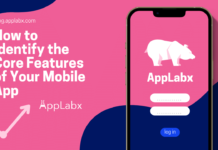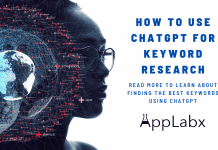Key Takeaways
- AI search in 2025 delivers personalized, predictive, and context-aware results, transforming how users discover information online.
- Businesses leveraging AI-driven SEO, structured data, and multimodal content gain higher visibility, engagement, and competitive advantage.
- Understanding ethical challenges, algorithmic bias, and continuous adaptation is essential for success in the evolving AI search landscape.
The landscape of online search has undergone a profound transformation in recent years, driven by the rapid advancement of artificial intelligence (AI). In 2025, AI-powered search engines are no longer merely tools for retrieving information; they have evolved into intelligent systems capable of understanding user intent, analyzing context, and delivering highly personalized and relevant results in real time. The integration of AI into search technology is fundamentally reshaping the way individuals and businesses access, consume, and leverage information on the internet.

Traditionally, search engines relied heavily on keyword matching and link-based algorithms to rank content. While effective to a degree, these methods often struggled to understand the nuanced context of complex queries, resulting in generic or irrelevant search results. AI search, however, leverages advanced machine learning, natural language processing (NLP), and deep learning models to interpret the meaning behind queries, recognize semantic relationships between concepts, and anticipate the needs of users before they explicitly articulate them. This shift from keyword-based to intent-based search represents a seismic change in the digital ecosystem, influencing everything from content creation and search engine optimization (SEO) to digital marketing strategies and user engagement.
In 2025, AI search is characterized by several key innovations. Conversational search capabilities, powered by sophisticated AI language models, enable users to interact with search engines in a more natural, human-like manner, whether through typed queries or voice commands. Visual and multimodal search allows users to find information using images, videos, and other media formats, expanding the ways in which information is accessed online. Predictive search algorithms, powered by AI, anticipate user needs by analyzing behavior patterns, past searches, and contextual signals, delivering highly tailored results with remarkable accuracy. These advancements are not only enhancing the user experience but also presenting new opportunities for businesses to connect with audiences in a more targeted and meaningful way.
Moreover, AI search is redefining the metrics of digital success. Traditional SEO practices, focused primarily on backlinks and keyword density, are being augmented—or in some cases replaced—by strategies that prioritize content relevance, semantic structure, and user intent alignment. Businesses that adapt to AI-driven search engines can achieve higher visibility, improved engagement, and better conversion rates, while those that fail to evolve risk falling behind in an increasingly competitive digital environment.
As AI search continues to mature, understanding its mechanisms, trends, and implications has become essential for marketers, SEO specialists, and business leaders alike. This article explores the transformative impact of AI on online search in 2025, highlighting the key trends, benefits, challenges, and strategic considerations that define this new era of intelligent search. By examining how AI is reshaping the way information is discovered and utilized, readers will gain actionable insights into leveraging AI search technologies to optimize digital presence, improve user experiences, and stay ahead in an evolving online landscape.
But, before we venture further, we like to share who we are and what we do.
About AppLabx
From developing a solid marketing plan to creating compelling content, optimizing for search engines, leveraging social media, and utilizing paid advertising, AppLabx offers a comprehensive suite of digital marketing services designed to drive growth and profitability for your business.
At AppLabx, we understand that no two businesses are alike. That’s why we take a personalized approach to every project, working closely with our clients to understand their unique needs and goals, and developing customized strategies to help them achieve success.
If you need a digital consultation, then send in an inquiry here.
Or, send an email to [email protected] to get started.
AI Search: How Artificial Intelligence is Transforming Online Search in 2025
- The Evolution of Online Search
- What is AI Search?
- Key Trends Driving AI Search in 2025
- Benefits of AI Search for Users and Businesses
- Challenges and Ethical Considerations
- Preparing for the Future of AI Search
1. The Evolution of Online Search
The evolution of online search has been marked by continuous innovation, from simple keyword-based systems to complex AI-driven solutions. Understanding this progression is crucial to appreciating how AI search in 2025 is transforming digital discovery.
Early Search Engines
- Emergence of keyword-based search engines in the 1990s such as AltaVista, Lycos, and Yahoo.
- Focused primarily on keyword matching rather than understanding context or intent.
- Indexed content manually or through basic automated crawlers.
- Limitations: irrelevant results, lack of personalization, and poor handling of natural language queries.
Example: AltaVista provided results based on exact keyword matches, often returning thousands of irrelevant links.
Table 1: Early Search Engine Features
| Search Engine | Launch Year | Key Feature | Limitation |
|---|---|---|---|
| AltaVista | 1995 | Keyword-based search | High irrelevant results |
| Lycos | 1994 | Web directory indexing | Limited scalability |
| Yahoo | 1994 | Human-curated directories | Time-consuming updates |
Algorithmic Search and PageRank
- Google introduced PageRank in 1998, prioritizing links and authority to rank pages.
- Focus shifted from simple keyword matching to ranking relevance based on popularity and trustworthiness.
- Algorithmic improvements enabled more accurate results and faster retrieval.
- Search engines started indexing large volumes of web pages automatically, improving scalability.
Example: Google’s early success was due to ranking pages not just on keywords but also on link structure, providing more relevant results.
Matrix: Keyword-Based vs Algorithmic Search
| Feature | Keyword-Based Search | Algorithmic Search |
|---|---|---|
| Relevance Determination | Keywords only | Keywords + authority |
| Result Accuracy | Low | Medium-High |
| Content Discovery | Limited | Scalable |
| User Experience | Basic | Improved |
Semantic Search
- Emergence in the 2010s focused on understanding user intent rather than just keywords.
- Use of natural language processing (NLP) to interpret queries and context.
- Knowledge graphs enabled search engines to link entities and concepts, providing richer results.
- Featured snippets, rich cards, and direct answers became more common.
Example: Google’s Knowledge Graph (2012) provided structured information about people, places, and things, improving instant access to relevant data.
Mobile and Personalized Search
- Mobile-first indexing prioritized mobile-friendly websites due to increasing smartphone usage.
- Personalization based on search history, location, and device context improved user experience.
- Integration of voice search and AI-powered suggestions enhanced accessibility.
Example: Google’s mobile-first indexing (2018) ensured that mobile-optimized websites ranked higher in search results.
Table 2: Personalized Search Features
| Feature | Description | Example |
|---|---|---|
| Location-Based Results | Search adjusted to user’s location | Local restaurant recommendations |
| Search History Integration | Personalized query suggestions | Recent searches influencing results |
| Device Adaptation | Mobile and desktop-specific ranking | Mobile-optimized pages prioritized |
AI-Driven Search
- Current phase (2025) integrates AI, machine learning, and deep learning.
- Focus on predictive search, conversational queries, multimodal input, and personalization.
- AI understands context, user intent, and semantic relationships at scale.
- Enables real-time recommendations and proactive content delivery.
Example: Google Gemini delivers personalized and predictive results, combining text, images, and context from previous user interactions.
Key Takeaways
- Online search evolved from simple keyword-based indexing to AI-driven, context-aware systems.
- Algorithmic and semantic search improved relevance, while mobile and personalized search enhanced accessibility and user satisfaction.
- AI search in 2025 represents the peak of this evolution, providing predictive, conversational, and multimodal search capabilities.
2. What is AI Search?
Artificial Intelligence search, or AI search, represents a significant leap in how online information is discovered, ranked, and presented. By leveraging machine learning, natural language processing, and deep learning algorithms, AI search systems move beyond simple keyword matching to understand user intent, context, and preferences. This allows for highly personalized, predictive, and context-aware search experiences.
Definition and Core Concepts
- AI search utilizes advanced algorithms to analyze user queries and provide relevant results based on intent rather than just keyword matching.
- Incorporates data from multiple sources, including historical searches, user behavior, and contextual signals.
- Employs deep learning to continuously improve result accuracy and anticipate user needs over time.
- Reduces information overload by prioritizing content most relevant to individual users.
Example: Google Gemini leverages AI to understand nuanced queries like “best laptops under $1000 for graphic design,” delivering highly relevant, contextualized results.
Table 1: AI Search vs Traditional Search
| Feature | Traditional Search | AI Search (2025) |
|---|---|---|
| Query Interpretation | Keyword matching only | Semantic understanding, intent-aware |
| Personalization | Limited | Highly personalized recommendations |
| Predictive Capabilities | None | Suggests results based on behavior |
| Result Format | List of links | Text, images, videos, knowledge panels |
Key Components of AI Search
- Natural Language Processing (NLP): Interprets user queries expressed in natural language, including questions and conversational phrases.
- Machine Learning Algorithms: Analyze patterns, user behavior, and click-through data to continuously improve result accuracy.
- Deep Learning Models: Enable semantic understanding of queries and content, recognizing relationships between entities and concepts.
- Knowledge Graphs: Organize and connect information for structured and enriched search results.
Example: Bing AI uses NLP and machine learning to answer multi-turn conversational queries, providing contextually relevant responses across multiple interactions.
Matrix: Components of AI Search
| Component | Function | Example |
|---|---|---|
| NLP | Understands language and intent | Parsing long-form queries |
| Machine Learning | Learns from user behavior | Predicting search suggestions |
| Deep Learning | Semantic and contextual understanding | Linking related concepts in search |
| Knowledge Graphs | Structures and connects information | Google Knowledge Graph displaying entities |
Applications of AI Search
- Personalized Search Results: Customizes results based on user preferences, location, and search history.
- Predictive Search: Anticipates queries and provides suggestions even before users finish typing.
- Multimodal Search: Combines text, images, video, and voice input for comprehensive search capabilities.
- Conversational Search: Supports multi-turn interactions, enabling users to refine queries naturally.
Example: Pinterest Lens allows users to search using images, while AI interprets the visual content to recommend similar styles or products.
Benefits of AI Search
- Improves result relevance, reducing time spent sifting through irrelevant links.
- Enhances user experience through context-aware recommendations and interactive formats.
- Provides businesses with actionable insights through predictive analytics and user intent data.
- Enables integration across platforms and devices, delivering consistent, high-quality experiences.
Table 2: Benefits for Users vs Businesses
| Benefit | Users | Businesses |
|---|---|---|
| Relevance | Accurate, intent-focused results | Higher engagement and conversions |
| Personalization | Tailored content based on behavior | Improved targeting and marketing |
| Predictive Insights | Faster access to desired info | Data-driven decision making |
| Multimodal Access | Text, images, voice, video | Rich content delivery across formats |
Key Takeaways
- AI search represents the next stage of online search, prioritizing intent, context, and personalization.
- Combines NLP, machine learning, deep learning, and knowledge graphs to deliver predictive, multimodal, and conversational experiences.
- Users benefit from highly relevant results, while businesses gain insights and competitive advantages.
- Understanding AI search is essential for adapting SEO strategies, content creation, and digital marketing for 2025 and beyond.
3. Key Trends Driving AI Search in 2025
AI search is rapidly evolving, and several key trends are driving its growth and shaping the way users interact with online information in 2025. Understanding these trends is essential for businesses, marketers, and content creators to remain competitive and leverage AI-driven search effectively.
Personalization and User Intent
- AI search increasingly focuses on understanding user intent and delivering personalized results.
- Algorithms analyze search history, location, demographics, and behavioral data to tailor content recommendations.
- Contextual understanding ensures results match both the explicit and implicit needs of the user.
Example: Google Gemini delivers search results customized to a user’s previous queries, location, and browsing behavior, providing highly relevant recommendations.
Table 1: Personalization Features in AI Search
| Feature | Function | Example |
|---|---|---|
| Search History Integration | Considers past queries | Personalized news feed |
| Location Awareness | Adjusts results based on geography | Nearby restaurant suggestions |
| Behavioral Analysis | Learns user preferences | Recommended products on e-commerce sites |
| Contextual Relevance | Understands intent beyond keywords | Semantic matching in search results |
Conversational and Voice Search
- Voice search and conversational AI are becoming mainstream as users demand natural, hands-free interactions.
- AI interprets spoken language, including context, tone, and intent, to provide accurate responses.
- Multi-turn conversations allow users to refine queries and receive more precise results over a sequence of interactions.
Example: Amazon Alexa and Google Assistant answer complex queries like “Find the best Italian restaurants nearby with outdoor seating,” refining results through follow-up questions.
Matrix: Traditional vs Conversational Search
| Feature | Traditional Search | Conversational/Voice Search |
|---|---|---|
| Query Input | Text only | Voice and natural language |
| Interaction | Single-turn | Multi-turn, conversational |
| Intent Understanding | Limited | Advanced contextual and semantic |
| User Experience | Basic | Interactive and hands-free |
Multimodal and Visual Search
- AI search now integrates text, images, video, and audio to deliver richer results.
- Visual recognition technology allows users to search using images or live camera input.
- Integration of multiple media formats enhances accessibility and engagement.
Example: Pinterest Lens allows users to upload photos of fashion items, and AI provides similar styles or product suggestions. Google Lens identifies plants, landmarks, or products using visual input.
Table 2: Multimodal Search Applications
| Media Type | Function | Example |
|---|---|---|
| Images | Visual content recognition | Pinterest Lens for fashion recommendations |
| Video | Context-aware video search | YouTube AI suggesting related clips |
| Audio | Sound-based query recognition | Music search via Shazam or Spotify |
| AR/VR Integration | Interactive immersive search | IKEA AR app visualizing furniture |
Predictive and Proactive Search
- AI leverages predictive analytics to anticipate user queries and needs.
- Machine learning identifies trends and user behavior patterns to deliver preemptive suggestions.
- Proactive search reduces the time spent searching and increases engagement.
Example: Netflix recommends shows before a user actively searches, based on viewing history and predictive algorithms. Amazon suggests products based on prior purchases and browsing behavior.
Integration Across Platforms and Devices
- AI search increasingly provides consistent experiences across smartphones, desktops, smart devices, and IoT platforms.
- Seamless synchronization allows users to continue queries across devices with context retention.
- Businesses can deliver unified, cross-platform search experiences for higher engagement and conversion.
Example: Google Search integrates results across mobile, desktop, and smart home devices, ensuring continuity in user experience.
Table 3: Cross-Platform Integration Features
| Feature | Function | Example |
|---|---|---|
| Device Synchronization | Continuity across devices | Resume a search from phone on desktop |
| Context Retention | Maintains session and intent | Multi-device shopping cart suggestions |
| Adaptive Display | Optimizes results for each platform | Mobile-friendly vs desktop layout |
| Unified Recommendations | Consistent AI suggestions | Personalized product or content recommendations |
Key Takeaways
- AI search in 2025 is defined by personalization, predictive analytics, conversational interfaces, and multimodal capabilities.
- Voice, visual, and cross-platform search are reshaping user behavior and expectations.
- Businesses that integrate these trends into SEO, content, and digital strategies gain significant competitive advantages.
- Staying ahead requires continuous monitoring of AI developments and adapting search strategies proactively.
4. Benefits of AI Search for Users and Businesses
AI search is transforming the online search landscape by providing significant benefits for both users and businesses. Leveraging machine learning, natural language processing, and predictive analytics, AI search enhances relevance, personalization, and efficiency across digital platforms. Understanding these benefits helps organizations and users maximize the potential of AI-driven search in 2025.
Enhanced Relevance and Accuracy
- AI search delivers highly relevant results by analyzing user intent, context, and behavior.
- Reduces irrelevant content, helping users find answers quickly and efficiently.
- Improves content discovery for businesses, enabling more targeted engagement.
Example: Google’s AI-powered search provides instant answers in featured snippets, reducing the need for users to navigate multiple web pages.
Table 1: Relevance Improvement Comparison
| Feature | Traditional Search | AI Search (2025) |
|---|---|---|
| Query Interpretation | Keyword matching only | Intent, context, and semantics |
| Result Accuracy | Medium | High |
| Time to Relevant Result | Longer | Reduced |
| User Satisfaction | Moderate | High |
Personalization and User Experience
- AI search customizes content based on individual preferences, search history, and location.
- Provides context-aware suggestions and predictive recommendations to improve engagement.
- Enhances accessibility by adapting results for multiple devices, including mobile and voice platforms.
Example: Amazon’s AI-powered search recommends products based on past purchases and browsing history, increasing purchase likelihood.
Matrix: Personalization Features
| Personalization Feature | User Benefit | Business Benefit |
|---|---|---|
| Search History Analysis | Tailored search results | Improved conversion rates |
| Location-Based Recommendations | Relevant local content | Higher foot traffic for local stores |
| Behavioral Prediction | Proactive suggestions | Increased engagement and retention |
| Cross-Device Adaptation | Consistent experience | Enhanced brand loyalty |
Time and Efficiency Gains
- AI search reduces the time users spend searching for information by delivering precise, preemptive results.
- Supports multitasking by providing quick answers and contextual recommendations.
- Businesses benefit from faster content discovery, analytics, and operational insights.
Example: Netflix uses AI search to recommend shows before users actively search, streamlining content discovery and increasing viewing time.
Predictive and Proactive Recommendations
- AI anticipates user needs and delivers content before explicit queries are made.
- Enhances user engagement by suggesting relevant products, articles, or media.
- Enables businesses to optimize marketing strategies and target audiences effectively.
Example: Spotify’s Discover Weekly playlist predicts user music preferences based on listening history and AI recommendations.
Table 2: Predictive AI Search Applications
| Application Type | User Benefit | Business Benefit |
|---|---|---|
| Content Suggestions | Discover relevant articles/videos | Increased engagement metrics |
| Product Recommendations | Quick access to desired items | Higher sales and conversions |
| Service or Feature Alerts | Anticipate needs | Better customer satisfaction |
| Trend-Based Insights | Stay updated on topics of interest | Targeted marketing opportunities |
Business Intelligence and Insights
- AI search provides actionable analytics on user behavior, search patterns, and content performance.
- Supports data-driven decisions in marketing, product development, and customer engagement strategies.
- Improves competitive advantage by identifying emerging trends and market gaps.
Example: HubSpot uses AI search analytics to identify content gaps and optimize blog performance, increasing organic traffic.
Key Takeaways
- AI search enhances relevance, personalization, efficiency, and predictive recommendations, improving the overall user experience.
- Businesses benefit from higher engagement, conversions, actionable insights, and market intelligence.
- By integrating AI search into digital strategies, organizations can optimize content delivery, anticipate user needs, and maintain competitive advantage.
- The combination of AI-driven personalization, predictive analytics, and real-time insights ensures that both users and businesses derive maximum value from search technologies in 2025 and beyond.
5. Challenges and Ethical Considerations
AI search is reshaping the digital landscape, but with its rapid adoption come significant challenges and ethical considerations. Understanding these aspects is critical for businesses, developers, and users to ensure responsible, fair, and transparent implementation of AI-driven search technologies in 2025.
Data Privacy and Security
- AI search relies heavily on user data, including search history, location, and behavioral patterns.
- Ensuring data protection and complying with regulations such as GDPR and CCPA is essential.
- Mismanagement of data can lead to breaches, unauthorized tracking, and user distrust.
Example: Google and Microsoft enforce strict data handling policies for AI search, including anonymization and encryption, to safeguard user information.
Table 1: Key Data Privacy Considerations
| Consideration | Description | Example Implementation |
|---|---|---|
| Data Minimization | Collect only necessary data | Only using search query context |
| User Consent | Transparent consent policies | Opt-in for personalized search |
| Data Security | Encryption and protection measures | End-to-end encryption for search data |
| Compliance | Adherence to legal standards | GDPR and CCPA compliance audits |
Algorithmic Bias
- AI algorithms can inherit biases from training data, leading to unequal representation and skewed search results.
- Biased results may impact certain demographic groups or promote specific viewpoints unfairly.
- Continuous monitoring, diverse datasets, and fairness-focused AI design are required to mitigate bias.
Example: Amazon discontinued an AI recruitment tool after discovering gender bias in candidate recommendations due to historical hiring data.
Matrix: Addressing Algorithmic Bias
| Challenge | Risk | Mitigation Strategy |
|---|---|---|
| Data Bias | Skewed search results | Use diverse, representative datasets |
| Model Bias | Favoring certain demographics | Implement fairness-aware algorithms |
| Feedback Loops | Reinforcing existing biases | Continuous monitoring and adjustment |
| Transparency | Lack of explainability | Publish model decision criteria |
Transparency and Accountability
- AI search often operates as a “black box,” making it difficult for users to understand how results are generated.
- Lack of transparency can reduce trust and make accountability challenging in case of errors or misinformation.
- Explainable AI and clear communication of ranking factors are critical.
Example: Google provides Search Central guidelines and AI explanations to improve transparency for content creators and users.
Table 2: Transparency Measures in AI Search
| Measure | Purpose | Example |
|---|---|---|
| Explainable Algorithms | Users understand result reasoning | AI-generated snippet explanations |
| Ranking Factor Disclosure | Transparency in content prioritization | Google Search algorithm updates |
| Audit Trails | Track AI decision-making | Log interactions for accountability |
| User Feedback Integration | Allow users to report issues | Feedback forms on search results |
Ethical and Social Implications
- AI search can inadvertently amplify misinformation, fake news, or harmful content.
- Over-reliance on AI may reduce critical thinking and limit exposure to diverse perspectives.
- Ethical guidelines are necessary to ensure equitable, responsible, and socially beneficial AI deployment.
Example: Facebook and YouTube implement AI moderation tools to reduce the spread of misleading content, but human oversight remains essential.
Regulatory and Compliance Challenges
- Governments are increasingly regulating AI technologies, including search engines, to protect user rights.
- Compliance requires continuous adaptation to evolving laws and industry standards.
- Failure to comply can result in legal penalties, reputational damage, and reduced user trust.
Example: The EU AI Act (proposed) imposes strict requirements on AI systems, including transparency, risk management, and human oversight for high-risk AI applications.
Table 3: Regulatory Considerations for AI Search
| Regulation | Requirement | Business Impact |
|---|---|---|
| GDPR | User data protection and consent | Mandatory privacy compliance |
| CCPA | Consumer data rights in California | Update AI data processing policies |
| Proposed EU AI Act | Risk management and transparency | Design systems for accountability |
| Local Data Laws | Regional restrictions on data storage | Adjust infrastructure and operations |
Key Takeaways
- Challenges of AI search include data privacy, algorithmic bias, lack of transparency, ethical concerns, and regulatory compliance.
- Responsible implementation requires a combination of technical safeguards, policy adherence, diverse datasets, and human oversight.
- Businesses that proactively address these challenges can build trust, ensure fairness, and maintain competitive advantage while leveraging AI search.
- Ethical and transparent AI search systems are essential to balance innovation with social responsibility in 2025 and beyond.
6. Preparing for the Future of AI Search
Preparing for the future of AI search in 2025 requires businesses and users to adopt proactive strategies, implement advanced technologies, and continuously adapt to evolving search behaviors. By understanding upcoming trends, optimizing content, and leveraging AI-driven tools, organizations can remain competitive while delivering superior search experiences.
Adapting SEO Strategies
- Shift from keyword-centric SEO to intent-driven and semantic SEO that aligns with AI search understanding.
- Integrate structured data, rich snippets, and schema markup to help AI interpret content contextually.
- Optimize for voice search and conversational queries, ensuring content addresses natural language questions.
Example: HubSpot has redesigned its SEO strategy to focus on intent-based topics and structured content, resulting in higher visibility on AI-driven search results.
Table 1: Traditional SEO vs AI-Optimized SEO
| Feature | Traditional SEO | AI-Optimized SEO (2025) |
|---|---|---|
| Keyword Focus | High | Intent and context-driven |
| Content Format | Text-heavy | Text, video, audio, and multimodal |
| Link Strategy | Backlinks-focused | Quality + contextual relevance |
| User Experience | Basic | Personalized and interactive |
Leveraging AI-Powered Tools
- Use AI tools for keyword research, content generation, and predictive analytics to enhance SEO performance.
- Automate repetitive SEO tasks, such as meta descriptions, title optimization, and content audits.
- Monitor AI search trends and algorithm updates to adjust strategies in real time.
Example: SEMrush and MarketMuse use AI to identify content gaps, predict trending topics, and optimize articles for higher engagement.
Matrix: AI Tools for SEO Preparation
| Tool Type | Function | Example |
|---|---|---|
| Content Optimization | Semantic relevance and readability | MarketMuse |
| Keyword & Trend Analysis | Predict trending search queries | SEMrush |
| Competitive Analysis | Benchmarking and gap analysis | Ahrefs |
| Automation & Reporting | Streamline repetitive SEO tasks | SurferSEO |
Optimizing for Multimodal and Conversational Search
- Prepare content for voice search, including natural language queries and FAQs.
- Incorporate visual search optimization by tagging images and videos with descriptive metadata.
- Ensure content is accessible across multiple devices, including mobile, smart speakers, and AR/VR platforms.
Example: Pinterest Lens allows users to search using images, and brands optimize visual content to appear in relevant search results.
Table 2: Multimodal Search Preparation
| Search Mode | Optimization Strategy | Example |
|---|---|---|
| Voice Search | Use conversational phrases | FAQs with natural questions |
| Visual Search | Image tagging and metadata | Product images on e-commerce sites |
| Video Search | Closed captions and semantic metadata | YouTube SEO with AI-driven recommendations |
| AR/VR Integration | Contextual 3D content | Virtual try-ons in retail |
Emphasizing User-Centric Content
- Focus on high-quality, informative, and engaging content that addresses user needs and intent.
- Personalize content delivery using AI analytics for segmented audiences.
- Continuously update and refresh content to maintain relevance with evolving AI search algorithms.
Example: Netflix tailors content suggestions and metadata based on user behavior, improving search discoverability and engagement.
Monitoring AI Search Trends and Analytics
- Track AI search performance using analytics tools to measure visibility, user engagement, and content effectiveness.
- Identify emerging trends such as zero-click searches, predictive queries, and AI-generated content consumption.
- Adjust strategies dynamically to align with new AI algorithms and user behaviors.
Example: Google Analytics 4 provides insights into user behavior, predictive metrics, and AI-driven engagement patterns to guide content strategy.
Table 3: Key Metrics for Future-Proof AI Search
| Metric | Purpose | Example |
|---|---|---|
| Engagement Rate | Measure user interaction with content | Click-through rate on AI search results |
| Bounce Rate | Identify content relevance gaps | Pages with high exit rates |
| Predictive Query Accuracy | Assess AI suggestion effectiveness | Search suggestions predicting user intent |
| Multimodal Interaction | Track voice, image, and video queries | Percentage of searches using visual AI |
Key Takeaways
- Preparing for AI search requires intent-driven SEO, multimodal optimization, and user-centric content strategies.
- Leveraging AI-powered tools improves efficiency, predictive insights, and adaptive optimization.
- Continuous monitoring of AI search trends ensures content remains relevant and competitive.
- Businesses that adopt forward-looking strategies will maximize engagement, visibility, and conversions in AI-driven search environments of 2025 and beyond.
Conclusion
Artificial Intelligence has fundamentally transformed the landscape of online search, shifting it from traditional keyword-based mechanisms to intelligent, predictive, and highly personalized systems. In 2025, AI search is no longer an emerging trend—it has become the backbone of digital discovery, influencing the ways users interact with information and how businesses optimize their digital presence.
The evolution of search has been marked by several key milestones, beginning with early keyword-based engines like AltaVista and Lycos, advancing through algorithmic ranking systems such as Google’s PageRank, and culminating in the AI-driven, intent-focused search engines of today. Modern AI search integrates natural language processing, machine learning, and deep learning to understand user intent, context, and preferences, delivering results that are increasingly accurate, relevant, and personalized.
Key trends driving AI search in 2025 include personalization, conversational and voice search, multimodal search, predictive analytics, and cross-platform integration. These developments have enabled search engines to deliver richer experiences, anticipate user needs, and integrate seamlessly with devices ranging from smartphones to IoT-enabled smart homes. Businesses that adopt AI-focused SEO strategies—incorporating intent-based content, structured data, semantic optimization, and multimedia content—can leverage these innovations to achieve higher visibility, improved engagement, and greater conversion rates.
The benefits of AI search are multi-faceted: users enjoy faster, more relevant, and context-aware results, while businesses gain actionable insights, enhanced digital reach, and competitive advantages. However, AI search also presents challenges, including data privacy risks, algorithmic bias, transparency issues, and ethical concerns. Responsible AI implementation, adherence to regulatory frameworks, and continuous monitoring are essential for mitigating these risks and ensuring equitable, trustworthy search experiences.
Preparing for the future of AI search requires strategic adaptation, technological integration, and proactive optimization. Companies must embrace AI-powered tools for content creation, keyword research, and predictive analytics, while optimizing for conversational, visual, and multimodal search formats. Continuous monitoring of trends and performance is critical, as AI algorithms evolve rapidly and user expectations continue to rise. Businesses that adopt a holistic, intent-focused approach to AI search will not only maintain relevance but also establish a long-term competitive advantage in the digital ecosystem.
In conclusion, AI search in 2025 represents a paradigm shift in online information discovery. It is reshaping how users interact with digital content, how businesses strategize their digital marketing, and how the broader online ecosystem functions. Those who understand the transformative potential of AI search, anticipate trends, and implement forward-looking optimization strategies will be well-positioned to thrive in an era defined by intelligence-driven search, personalized user experiences, and continuous innovation.
Key Takeaways:
- AI search has transitioned from keyword-based to intent-focused, predictive, and multimodal systems.
- Personalization, conversational search, and predictive analytics are key drivers of AI search in 2025.
- Businesses gain competitive advantages through AI-driven SEO, structured data, and adaptive content strategies.
- Ethical considerations, algorithmic bias, and data privacy must be addressed to ensure trust and fairness.
- Continuous adaptation and monitoring are essential to remain relevant in the evolving AI search landscape.
By recognizing the transformative power of AI search and aligning strategies with these emerging trends, businesses and users alike can fully harness the potential of intelligent, adaptive, and future-ready online search in 2025.
If you are looking for a top-class digital marketer, then book a free consultation slot here.
If you find this article useful, why not share it with your friends and business partners, and also leave a nice comment below?
We, at the AppLabx Research Team, strive to bring the latest and most meaningful data, guides, and statistics to your doorstep.
To get access to top-quality guides, click over to the AppLabx Blog.
People also ask
What is AI search and how does it work in 2025?
AI search uses artificial intelligence, including machine learning and NLP, to understand user intent, context, and preferences, delivering personalized, predictive, and highly relevant search results.
How is AI search different from traditional search engines?
Unlike keyword-based traditional search, AI search focuses on user intent, context, and personalization, providing predictive results and multimodal content beyond simple link listings.
What are the key trends driving AI search in 2025?
Key trends include personalization, voice and conversational search, multimodal input, predictive analytics, and cross-platform integration for richer user experiences.
How does AI improve search relevance for users?
AI analyzes context, behavior, and intent to deliver results that match user needs, reducing irrelevant content and improving the speed and accuracy of information retrieval.
What role does natural language processing play in AI search?
NLP allows AI search engines to understand conversational language, queries with context, and complex intent for more accurate and meaningful results.
How does AI personalize search results?
AI evaluates user history, preferences, demographics, and behavior to provide customized search results tailored to each individual’s interests and needs.
What is conversational AI search?
Conversational AI search enables multi-turn dialogues where users can ask follow-up questions, refining answers naturally, similar to interacting with a virtual assistant.
How is voice search integrated into AI search?
AI search interprets voice queries using NLP and context analysis, providing instant answers, recommendations, and actions through smart devices and assistants.
What is multimodal AI search?
Multimodal AI search combines text, images, audio, and video in one query, allowing users to search using multiple inputs for more comprehensive results.
How does predictive search work with AI?
Predictive AI search anticipates queries based on past behavior, trends, and context, delivering suggestions or answers before users finish typing or searching.
What industries benefit most from AI search?
E-commerce, healthcare, travel, media, and enterprise sectors benefit from AI search by improving user engagement, content relevance, and operational efficiency.
How does AI search impact SEO strategies?
SEO must focus on intent-based content, semantic optimization, structured data, and multimedia integration to align with AI-driven search ranking algorithms.
What are the challenges of AI search?
Challenges include data privacy risks, algorithmic bias, lack of transparency, ethical considerations, and over-reliance on automated recommendations.
How does AI search affect user privacy?
AI search collects behavioral, location, and preference data to personalize results, which requires robust privacy safeguards and compliance with regulations like GDPR.
What ethical concerns exist in AI search?
Ethical concerns include algorithmic bias, misinformation propagation, unequal representation, and accountability for AI-generated recommendations.
Can AI search reduce irrelevant search results?
Yes, AI interprets intent and context, filtering out irrelevant links and providing users with faster, more accurate, and highly relevant results.
How do businesses use AI search for marketing?
Businesses leverage AI search for predictive analytics, personalized content delivery, targeted recommendations, and data-driven decision-making to enhance engagement.
What role does structured data play in AI search optimization?
Structured data helps AI understand content context, improving visibility in rich snippets, knowledge panels, and voice or visual search results.
Is AI search only for large companies?
No, AI search benefits all sizes of businesses by improving content relevance, predictive recommendations, and optimizing user experience across digital platforms.
How does AI search handle multimodal content?
AI search integrates and interprets text, images, videos, and audio to deliver contextual results that match complex queries across formats.
What is the future of voice-enabled AI search?
Voice-enabled AI search will become more conversational, context-aware, and integrated with IoT devices for seamless, hands-free information retrieval.
How does AI search improve user experience?
By delivering relevant, personalized, and predictive results across devices and content types, AI search enhances speed, accessibility, and engagement for users.
What role does AI play in enterprise search?
AI search helps organizations retrieve internal data efficiently, categorize information, and deliver context-aware insights for faster business decision-making.
How do AI search engines handle bias?
AI developers use diverse datasets, continuous monitoring, and fairness algorithms to reduce bias and ensure equitable and accurate search results.
Can AI search predict user intent accurately?
Yes, by analyzing search history, behavior, location, and trends, AI can anticipate queries and deliver preemptive, contextually relevant results.
How do AI search trends influence content marketing?
Content marketing must focus on user intent, semantic relevance, rich media, and structured data to align with AI search capabilities and improve visibility.
What is the importance of continuous optimization for AI search?
AI search evolves rapidly; regular content updates, monitoring performance, and adapting strategies ensure ongoing relevance and higher rankings.
How do AI search engines integrate with e-commerce?
AI search powers personalized product recommendations, visual search, predictive suggestions, and trend-based insights to increase conversions and engagement.
What is the impact of AI search on traditional SEO?
Traditional SEO relying on keywords alone is less effective; AI search requires semantic, intent-focused, and multimodal optimization for long-term success.
How can businesses prepare for AI search in 2025?
Businesses should adopt AI-powered tools, optimize content for intent and multimedia, implement structured data, and monitor trends to stay competitive in AI-driven search.




































